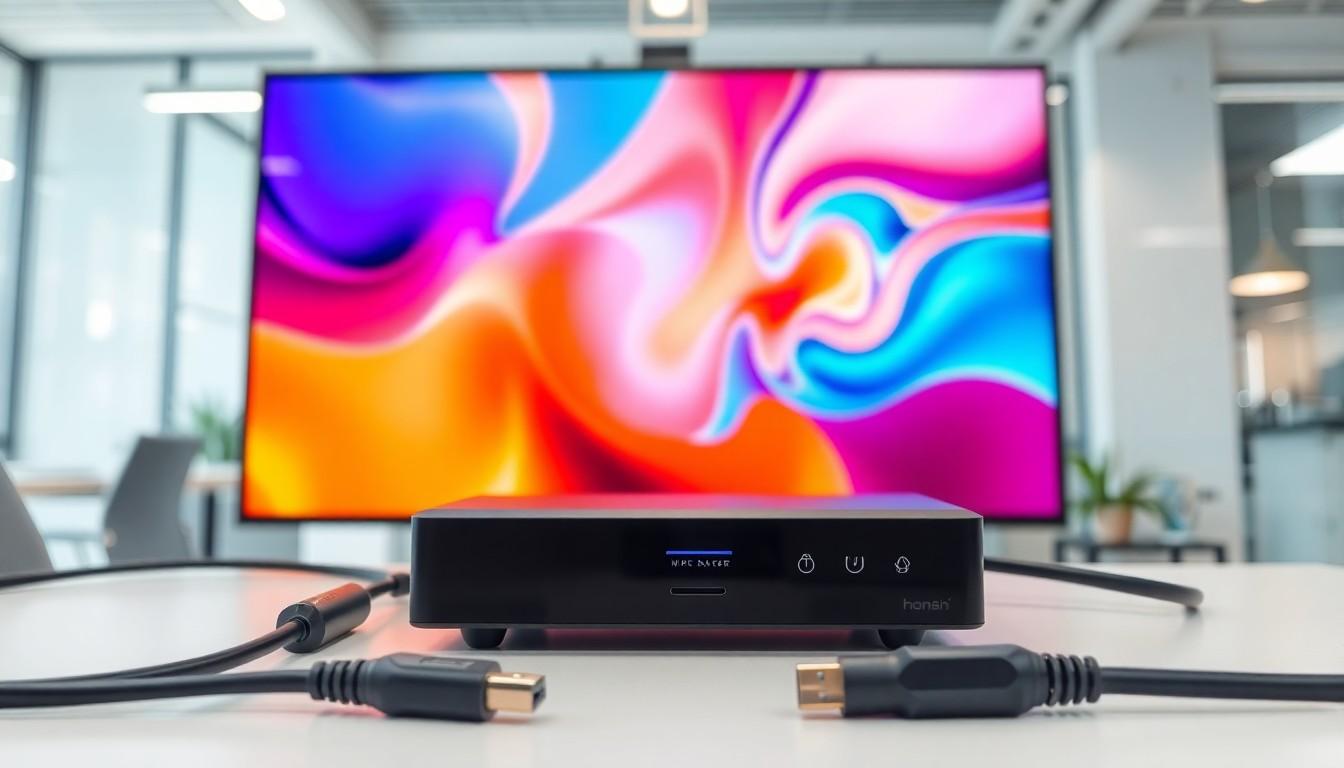In a world where attention spans are shorter than a goldfish’s, digital signage media players are the superheroes businesses didn’t know they needed. These nifty devices transform bland displays into vibrant canvases that capture attention faster than a cat video goes viral. Whether it’s a bustling retail store or a sleek corporate office, they turn ordinary screens into dynamic storytellers that engage customers and boost brand visibility.
Digital Signage Media Player
Digital signage media players serve as the core technology behind dynamic content delivery. These devices control the playback of media, ranging from images to videos, on digital displays. Several types of players exist, including standalone models and networked solutions. Standalone players function independently, while networked versions connect to the cloud or local networks for remote content management. Functionality varies across different players, with some offering advanced features like content scheduling, playback analytics, and touch screen interactivity. Using high-performance processors, many players ensure smooth media playback without lag, accommodating high-resolution content. Certain models incorporate built-in storage, allowing for offline operation when internet connectivity is unreliable. Connectivity plays a crucial role in the effectiveness of these media players. Standard options include HDMI, USB, and Wi-Fi connections, enabling easy integration with various display types. Some players support multiple output formats, ensuring compatibility with different screen sizes and resolutions. Digital signage media players also enhance branding by providing real-time updates and tailored messaging. Businesses leverage this flexibility to adapt content based on customer preferences or time-sensitive promotions. Implementing a media player optimizes digital signage systems, increasing audience engagement and reinforcing marketing strategies. Overall, the technology behind digital signage media players continues evolving. Innovations in software and hardware increase capabilities, allowing for more sophisticated content experiences. As a result, organizations increasingly rely on these tools to enhance visual communication across diverse environments.Key Features To Consider

Hardware Specifications
Hardware specifications directly impact performance. Look for players with powerful processors and adequate RAM to ensure smooth content playback. Consider storage capacity; it must accommodate a range of media files. Graphics capabilities play a vital role, as high-quality visuals enhance viewer engagement. Evaluate the operating temperature range; this helps identify suitability for varied environments. Opting for players with durable build quality ensures longevity in demanding settings.Software Compatibility
Software compatibility determines the versatility of a media player. Players should integrate seamlessly with various operating systems like Windows, Android, and Linux. Ability to run different content management systems allows businesses to manage displays effectively. Support for popular formats like MP4, JPEG, and HTML5 is essential for diverse content types. Regular updates from software providers promote security and introduce new features, extending the player’s capabilities.Connectivity Options
Connectivity options are crucial for integration. Ensure the player supports HDMI and USB connections for easy display linkage. Wi-Fi and Ethernet options enable robust network capabilities, allowing for remote management. Check for compatibility with mobile devices through Bluetooth or NFC for flexible content sharing. DisplayPort and VGA connections provide additional support for legacy displays. The ability to connect multiple players enhances scalability for growing businesses.Types Of Digital Signage Media Players
Digital signage media players come in various types, each designed to meet specific needs and environments.Standalone Players
Standalone players operate independently without network connectivity. They connect directly to displays via HDMI or VGA cables. Often used in small retail settings or kiosks, these players store content locally on USB devices or internal storage. Users can control playback through remote controls or onboard buttons. With simplicity and ease of use, standalone players suit businesses seeking a straightforward signage solution.Networked Players
Networked players integrate with local or cloud networks, enabling centralized management of content. Companies leverage these players to push updates across multiple displays simultaneously. Equipped with Ethernet, Wi-Fi, or both, they provide flexibility in installation. Content scheduling and monitoring features allow users to analyze playback performance and audience engagement. This type suits larger locations where ongoing content updates are crucial.Cloud-Based Players
Cloud-based players utilize Internet connectivity to manage content storage and playback remotely. Users access and update content through web-based platforms, simplifying management across various locations. Real-time updates ensure messages stay current, allowing for dynamic marketing strategies. Compatibility with various content formats enables the delivery of diverse digital experiences. Businesses that require agility in messaging benefit from cloud-based solutions.Benefits Of Using Digital Signage Media Players
Digital signage media players improve customer engagement through dynamic visuals. Transforming static displays into eye-catching presentations captivates audience attention effectively. Information updates can occur in real-time, allowing businesses to communicate relevant messages immediately. Flexibility exists in content delivery, encompassing images, videos, and animations tailored to varied audiences. Scheduling capabilities enable businesses to organize content around peak traffic times for optimal visibility. Analyzing playback data aids in understanding viewer preferences, guiding future content decisions based on engagement metrics. Enhanced brand visibility stems from consistent messaging, fostering familiarity and recognition among potential customers. Connectivity options like HDMI and Wi-Fi facilitate seamless integration with existing infrastructure, minimizing setup complexity. Standalone setups offer ease of use in smaller locations, while networked solutions cater to environments requiring centralized control. Cloud-based players provide a distinct advantage, allowing remote content management without on-site intervention. Diverse media formats supported by these players ensure compatibility with multiple types of content. Cost-effectiveness arises through reduced printing expenses, unlike traditional signage methods. Digital solutions scale easily, adapting to locations that require multiple displays or varied messaging strategies. User-friendly interfaces simplify operation, minimizing training needs and facilitating smooth onboarding for staff. Selecting digital signage media players leads to enhanced marketing strategies, optimizing visual communication across diverse settings.Top Digital Signage Media Players On The Market
Digital signage media players come in various models, each offering distinct features suitable for different needs. Below are notable players currently available:| Media Player | Key Features | Best Use Case |
|---|---|---|
| BrightSign XT | Supports 4K resolution, offers powerful processing, and has extensive connectivity options. | Ideal for high-traffic areas requiring dynamic content. |
| Samsung PM55F | Provides built-in Wi-Fi, supports remote management, and offers versatile content compatibility. | Great for retail environments needing consistent updates. |
| AOpen Digital Engine DE54 | Features Intel processors, supports multiple media formats, and includes flexible mounting options. | Suitable for corporate presentations and signage. |
| IAdea XMP-7300 | Delivers reliable performance, features real-time updates, and integrates easily with cloud platforms. | Best for businesses needing effective remote management. |
| PlayDigital | Offers user-friendly interfaces, supports multimedia playback, and provides comprehensive analytics. | Perfect for small establishments looking to enhance customer engagement. |
